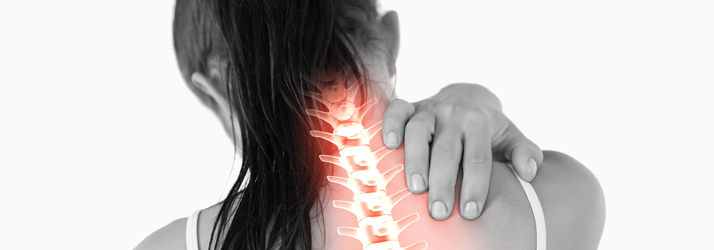Upper Cervical Specific Chiropractic in New York NY

What is Upper Cervical Specific Chiropractic in New York NY? Hole-in-One Technique, Toggle-Recoil Technique, Grostic Technique and all other technique systems under the National Upper Cervical Chiropractic Association (N.U.C.C.A.)
The Subluxation Theory of Upper Cervical Specific Chiropractic
“We never know how far reaching something we may think, say or do today will affect the lives of millions tomorrow.” -BJ Palmer D.C.
“The human body should be in a constant adaptive state, this is the state of health and healing. Once a person’s neurophysiology becomes ‘stuck’ it becomes pathological, health and function are diminished and we call this mal-adaptation a Subluxation ‘Pattern’.” -RSM D.C.
“Healing Happens in Alignment.” -F Schofield D.C.
A Chiropractic Subluxation, or more specifically a Vertebral Subluxation Complex (VSC), is defined as two vertebrae (bones in the spine) that move out of alignment and totally or partially“lock” into that position thereby negatively affecting nerve-system function which can result in a wide variety of seemingly unrelated symptoms and conditions. The Upper Cervical region of the spine consists of the Occipital bone, the Atlas vertebra and the Axis vertebra, all three of which are connected to, surround and protect the brainstem, vagus nerve, spinal nerve roots and other cranial nerves.
The integrated Upper Cervical Subluxation Theory has three parts, all of which occur concurrently and which we’ll look at below.
Part 1. Spinal Cord Irritation Theory in New York NY
- The C1 and C2 nerve roots are the most vulnerable to irritation and injury because they emit posteriorly from the spinal cord and there is no facet joint to protect them.
- They are located in an extremely mobile area
- There is no protective dural sheath so they are more exposed
- It has been shown that pressure levels of 5–10mmHg (millimeters of mercury) are sufficient to induce venous congestion and functional impairment of nerve roots (that’s equivalent to the pressure of holding a dime in the palm of your hand.
Part 2. Dentate Ligament Theory
- Developed by John Grostic, Doctor of Chiropractic
- Dentate ligaments are continuous with pia-mater and connect laterally to dura: 21 pairs of lateral bands (Eriksen p.61)
- These ligaments work to anchor the spinal cord to dura-mater, and protect it while in motion
- An Atlas Subluxation (misalignment) causes chronic tension on the dentate ligaments of the dura-mater, which causes distortion and deformation of the spinal cord
- Neurologic dysfunction occurs via two mechanisms:
- Direct mechanical irritation of the Upper Cervical Neurology
- Venous congestion and stasis with loss of nutrients leading to altered nerve conduction
- The spinocerebellar and spinothalamic tracts are the two most likely areas of mechanical irritation from dentate ligament torsion on the spinal cord
- The spinocerebellar tracts are involved with muscle tone, balance, proprioception and coordination, while the spinothalamic tracts are involved in conveying pain and temperature to the neuro-axis
*Study: (Kahn, EA. The Role of Dentate Liaments in Spinal Cord Compression, and the Syndrome of Lateral Sclerosis. J Neurosurg, 1947; 4:191-199)*
- Tension in the spinal cord at the cervical level can cause dysfunction in the lower spine and extremities
- Chronic stress on dentate ligaments can lead to ligamentous hypertrophy
- Tension and anoxia affect the large-fiber nerves first: touch, motor, vibratory, position sense (which means that pain and disability is often the last sensation and condition to occur in the progression of chronic Subluxation in the upper Cervical Region, the initial symptoms would more likely include but not be limited to, nausea, dizziness, vertigo, ringing in the ears, tingling, numbness, etc.)
Part 3. Dysafferentation Theory
- The health and function of the brain relies on constant sensory input telling the subconscious brain where we are in space and time (muscle spindles firing off continuous afferent impulses)
- The area with the most dense mechanoreceptive input into the nervous system is in the Upper Cervical Spine
- Inappropriate sensory input (afferentation) can cause problems with cognitive, motor and autonomic functions (Note: Autonomic functions include all the organs, glands and tissues you don’t consciously control, like the heart, lungs, liver, kidneys, spleen, gallbladder, digestive organs, thyroid, adrenals, fight-or-flight response, etc.)
- “Optic receptors (rooted at the top of the brainstem) provide visual information to the neuroaxis regarding the body’s relationship to the horizon. The vestibular apparatus informs the brain of the head's position and works to keep it perpendicular with the ground by altering the tone of the cervical muscles.” (Eriksen p.2)
*Note: this is directly related to the righting reflex which states that our eyes must be level with the horizon to prevent imbalance and dis-coordination. So when the Upper Cervical Subluxation takes our eyes off-level with the horizon our physiological function breaks down and compensations create increased stress, dysfunction and maladaptive movement patterns. - According to Guyton,the most important proprioceptive input required for maintenance of equilibrium is derived from joint receptors in the neck
- The cervical spine has more mechanoreceptors per surface area than any other region of the spine (via the muscle spindle-receptor)
- Proprioception is the primary input into the cerebellum
- Afferent (information in) fibers in the cerebellum outnumber efferent (information out) 40:1. Therefore we are Sensory organisms, we must have information coming into the brain and brainstem to have a response going back out into the external or internal environment
- Upper Cervical afferents feed directly into the brainstem
- Altered input leads to altered output (bad information in leads to the wrong response going out/garbage in-garbage out)
Neurology of the Upper Cervical Adjustment
What is the Upper Cervical Chiropractic Specific Adjustment doing on a neurological level?
- Proper head and neck alignment balances mechanoreceptive input and releases the body’s compensation patterns which restores the body’s structural balance.
- Autonomic balance restores the body’s dysfunction and increases its physiological healing capacity.
